
What Is Chaga Mushroom?
Chaga mushroom has long played a central role in traditional and natural holistic practices. But what effects does it have, how is it prepared, and is it safe? Keep reading to find out.
Chaga mushroom, or Inonotus obliquus, is native to colder regions of the Northern Hemisphere, where it grows naturally on birch trees. And while its black, charcoal-like appearance might be a little off-putting, chaga mushroom has huge potential as a supplement and adaptogen. Keep reading for an in-depth look at the chaga mushroom, its history, effects, benefits, safety, and more.
What Is Chaga Mushroom?
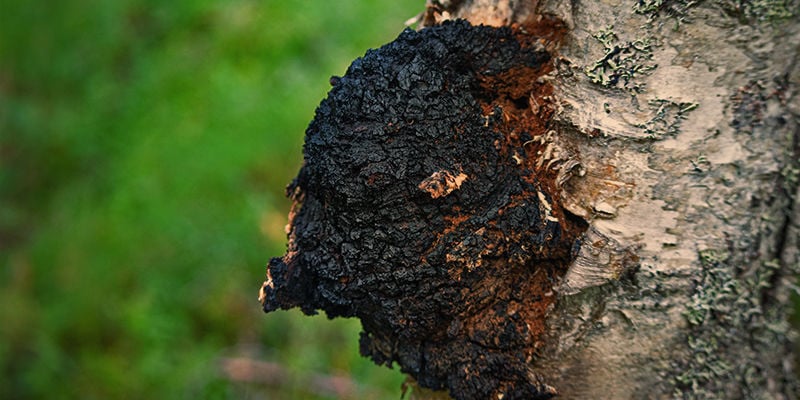
Chaga mushroom is a non-toxic parasitic mushroom in the Hymenochaetaceae family. It uses trees as hosts, on which it forms characteristic black, burnt-looking conks. For centuries, chaga mushroom has been used in teas and other artisan brews to promote health and well-being. This is primarily due to its high antioxidant count, and other potential health benefits that we’ll look at in more detail further down in this article.
Where and How Do Chaga Mushrooms Grow?
In nature, Inonotus obliquus is most commonly found growing on birch trees in colder regions, such as the Circumboreal Region (which mainly comprises Canada, Europe, Alaska, Russia, and the northeastern United States). The spores of the mushroom enter a host tree through poorly healed wounds and branch stubs. It spreads through the host tree's heartwood (the central, supporting pillar of the tree), where it can live for over 80 years. After part of the tree has died from the fungal infection, the fungus begins to form fertile fruit underneath the tree bark, which forms spores that spread to other vulnerable trees.
In commercial plantations, chaga mushrooms are implanted directly into birch trees of around 10 years or older. This is done using special wooden dowels that carry the mushroom mycelia. Small holes are first drilled into the trees, into which the wooden dowels are then implanted. A single tree usually receives 4–6 dowel implantations and produces roughly three harvests of ripe chaga mushrooms over 4–7 years.
What Does Chaga Look Like?
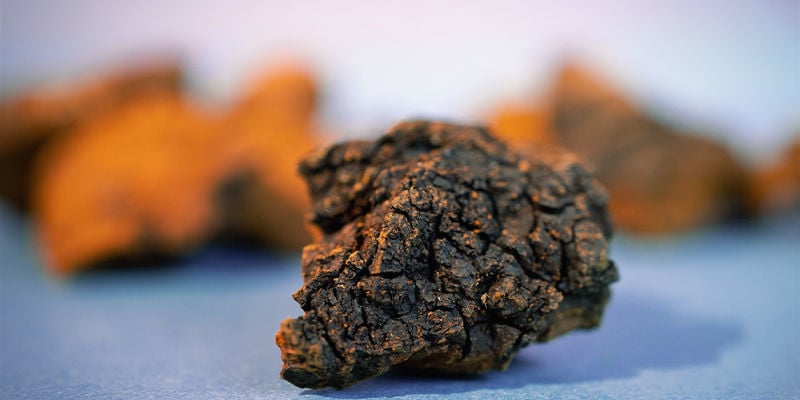
Chaga has a very distinct appearance. Unlike most mushrooms, the part of the chaga mushroom that is most visible to the human eye is its mycelium, which tends to form extremely dark, charcoal-like conks. The mushroom’s fruiting body, on the other hand, is rarely seen, as it forms under the tree bark.
Is Chaga an Adaptogen?
An adaptogen is a compound that, in herbal healing, is believed to help stabilise physiological processes and promote homeostasis. Many naturopaths believe that adaptogens can help relieve tension, quell the immune response, and restore balance to the body to keep it functioning at its best.
Inonotus obliquus is one of the key mushroom species placed in the adaptogen category by naturopaths and healers. For centuries, in fact, chaga mushroom has been used to make teas and brews that are believed to promote the vitality of the drinker.
Chaga mushrooms play a very important role in Russian folk practices, for example, and are also used as part of traditional natural practices in other Northern European countries. Its use grew exponentially during WWII, when, besides its traditional uses, chaga was used as a coffee substitute.
What Are Some Common Forms of Chaga Mushroom?
Chaga mushrooms are available in many different forms, including whole mushrooms, dried powders, extracts, and ready-made teas/preparations. All of these products have their own unique benefits, and picking one over the other will come down to your own personal preference.
Whole Mushroom — Fresh or Dried
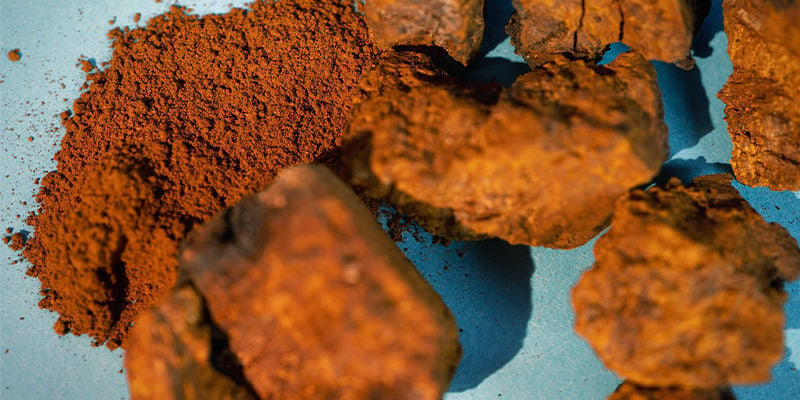
Depending on where you live, you may be able to buy chaga fresh or in dried pieces. Unlike when buying regular mushrooms, like portobello or button mushrooms (which are actually the flowering parts of the fungus), the pieces of fresh or dried chaga mushroom sold online or at health food stores are pieces of mycelium.
These pieces of mushroom are most commonly steeped in hot water for several minutes to create a light brown infusion that looks similar to black tea, and tastes similar to coffee.
Chaga Tea

Ready-made tea is another common way chaga mushroom is sold around the world, especially in areas where it is hard to source the whole mushroom, dried or fresh. These teas can vary greatly from one vendor to another, but usually contain a mix of herbs and spices designed to help mask the flavour of the chaga mushroom (which is quite earthy and bitter) as well as contribute other health benefits to the tea blend.
If you’re new to chaga tea, or you’ve tried it but struggle with its strong taste, a ready-made tea blend might be the perfect way to give it a second try. While these teas essentially contain lower doses of chaga than what you’d get from steeping dried, fresh, or powdered mushrooms, they offer a good first foray into the chaga experience.
Powdered Chaga — Powder or Extract
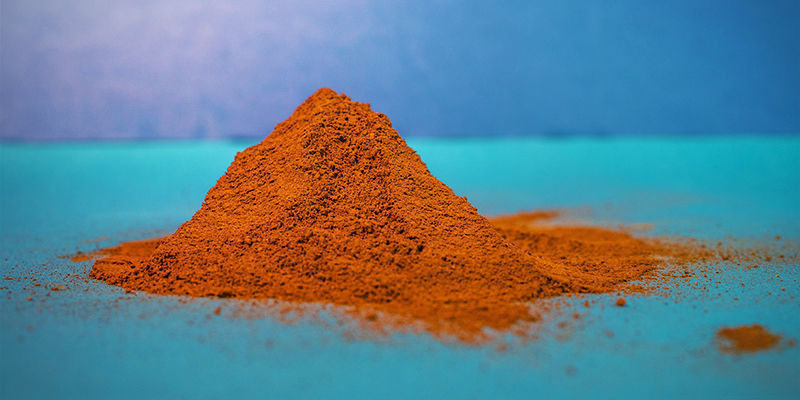
Powdered chaga comes in two forms: dried and pulverised, or as a concentrate.
The former is made by drying and pulverising the whole chaga mushroom, and it contains the same concentration of compounds you’d find in a whole piece of dried mushroom.
The latter, on the other hand, is made by concentrating the compounds of the chaga mushroom into a rich powder. This powdered extract contains much higher concentrations of antioxidants and other compounds than you’d get from a single piece of dried mushroom.
Tincture
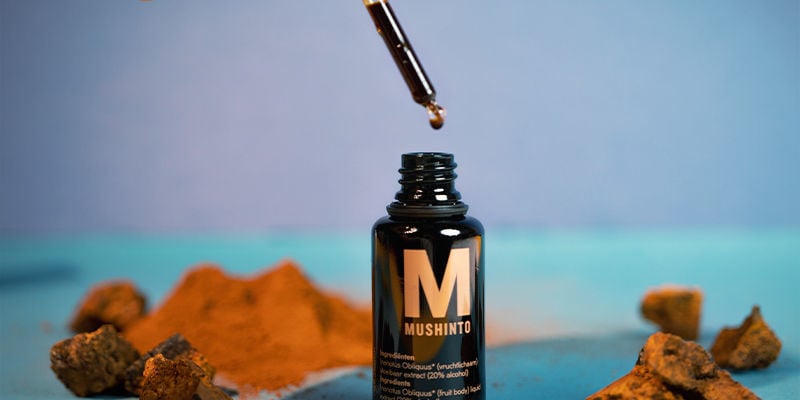
Chaga tinctures come in many different formulations. However, they are all basically made by extracting the essential active compounds from chaga and condensing them into a small amount of liquid (the most common method is ethanol extraction, which is also used to make extracts of other herbs and plants).
The resulting mushroom tinctures contain super high concentrations of antioxidants and other compounds, and can be administered in much smaller doses. Again, these tinctures are great alternatives if you don’t like the flavour of regular chaga tea.
Capsules
Chaga capsules are a very easy way to consume the Chaga mushroom. Containing the powdered form, they have the same effects but are even easier to consume. Capsules are the perfect option for those who just want an easy, non-invasive way to consume Chaga mushrooms and continue with their day. Lacking basically any ceremony, they offer convenience over all else. However, if you want to take them every day, a convenient method is much more likely to become a habit.
Effects and Side Effects of Chaga Mushroom
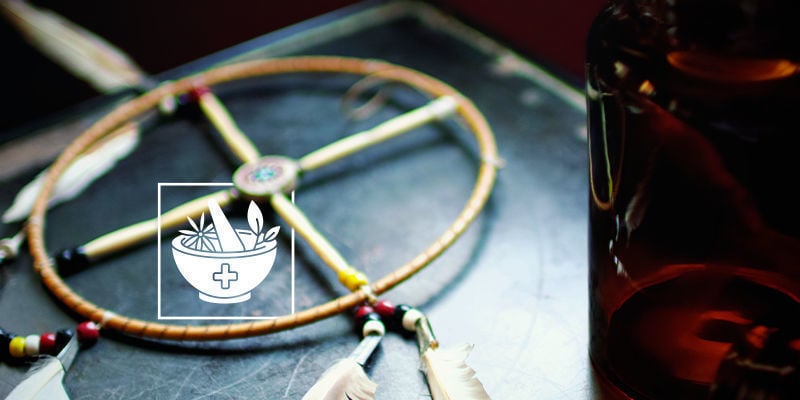
As we mentioned earlier, chaga mushrooms have long been used as part of traditional and natural holistic practices. However, as is often the case with natural preparations of this kind, a lack of research into the mushrooms, their chemical composition, and mechanism of action means the scientific and medical community still have questions about this mushroom’s health benefits and safety.
Still, we can take a closer look at what we do know about chaga to pave the way for further exploration.
What Are the Benefits of Chaga Mushrooms?

Research shows that Inonotus obliquus is rich in a wide variety of antioxidants. In fact, chaga mushrooms rank particularly high on the ORAC scale (used to measure the antioxidant activity of different compounds), outperforming other popular superfoods and health foods, including acai berries, goji berries, kale, prunes, and more. It is also rich in B vitamins, potassium, rubidium, cesium, amino acids, fiber, zinc, iron, and many other vitamins, minerals, and nutritional compounds.
Thanks to its high concentration of these compounds, studies have looked into the chaga mushroom’s potential to benefit the human body and mind in various ways.
Does Chaga Cause Negative Side Effects?
There is still no conclusive information on the side effects and full safety profile of chaga mushrooms. In general, however, chaga mushrooms and their powdered or concentrated derivatives are well-tolerated by most healthy individuals.
Does Chaga Get You High?

No. Inonotus obliquus does not produce psychedelic or intoxicating effects in its fresh, dried, powdered, or concentrated forms. Drinking chaga tea or taking a chaga tincture will not produce euphoria, a buzz of energy, or soporific effects. In fact, the effects of drinking chaga tea are pretty similar to drinking any other regular tea.
Can Chaga Be Harmful?
Chaga is generally considered a safe and non-toxic supplement by many health authorities in Europe, the UK, North America, and other areas of the world. However, as we mentioned earlier, there are certain scenarios where you may want to consult with your doctor before taking chaga, namely if you’re taking other medications, suffering from a serious medical condition, or if you’re pregnant or breastfeeding.
How To Use Chaga
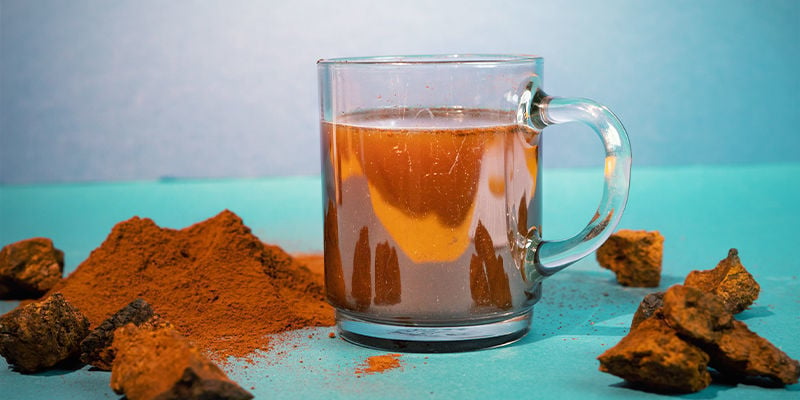
The easiest way to use Chaga is to brew it into a tea. Follow the instructions below to make your own chaga tea at home using fresh, dried, powdered, or concentrated chaga mushrooms.
Using Dried Chaga Mushrooms
If you’re able to get fresh or dried chaga mushrooms where you live, follow this recipe:
-
Gently wash your mushrooms under cold water and use some paper towels to remove any dirt or grit left on the mushrooms.
-
Put your mushrooms in a small saucepan with at least 2–3 cups of water and bring the mixture to a boil.
-
Turn the heat down to low and gently simmer your mushrooms in the water for at least 20 minutes. Add more water to the saucepan if need be.
Keep in mind that larger pieces of chaga mushroom will need to be steeped for longer.
Using Chaga Powder
Making chaga tea using powdered chaga couldn’t be simpler. Simply add 2–3 teaspoons of powdered chaga to 1 cup of boiling water and let the mixture steep for at least 5 minutes. You can use a French press if you're making multiple cups of chaga tea at once.
Using Chaga Tinctures
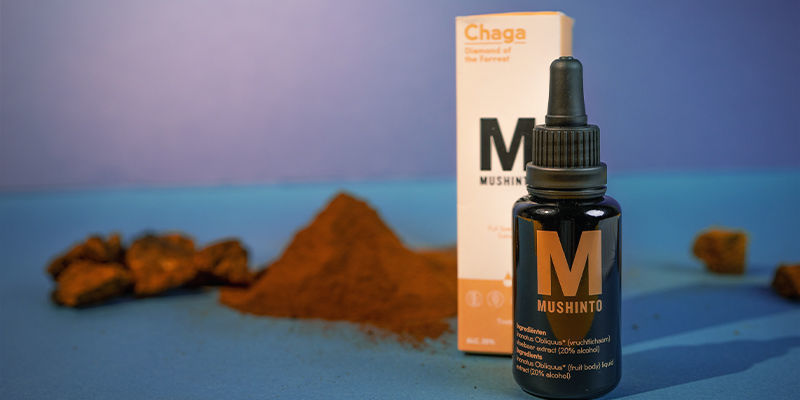
Chaga tinctures are typically designed to be taken orally, and usually come with a dropper to help with dosing, or in single-dose gel caps. For these kinds of products, we recommend following the dosage and usage instructions that come with the specific tincture.
How Much Chaga Should You Take?
How you dose chaga will depend on the type of product you’re using and the effects you’re looking for. Follow these basic guidelines to get an idea of how to dose chaga tea:
-
For tea made with dried chaga mushroom: Use 3–4 small pieces of mushroom (roughly 3–5cm in length) to make 1 litre of tea.
-
For tea made with powdered chaga: Use 2–3 teaspoons of powdered chaga for a single cup of tea.
-
For chaga tinctures or extracts: Follow the usage instructions associated with your particular tincture or extract.
How Long Does It Take for Chaga To Take Effect?
Remember, chaga doesn’t have any immediately noticeable effects other than the mellow, pleasant feeling you’d get from drinking a cup of tea. The potential benefits of chaga tea described above also don’t set in instantly; like with other adaptogens (like pollens or maca powder, for example), the benefits of chaga set in over time with extended use. It is generally recommended that you take chaga for at least 3–4 weeks to begin reaping the benefits.
How To Store Chaga
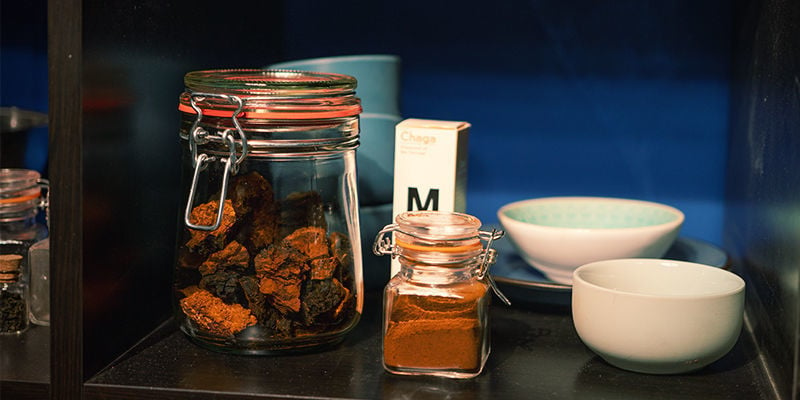
Chaga is best stored dried or pulverised in an airtight container. Keep the container in a dry, dark place (such as a kitchen cupboard or pantry) to preserve the dried mushrooms or powder for as long as possible.
Can Chaga Go Bad?
Fresh chaga mushrooms, like other mushrooms, will wilt pretty quickly, which is why they are typically sold dried or as a powder. Dried and powdered chaga mushrooms should keep for at least 3 months if stored in an airtight container in cool, dry, and dark conditions.
Wrapping Up — The Wonders of Chaga Mushroom
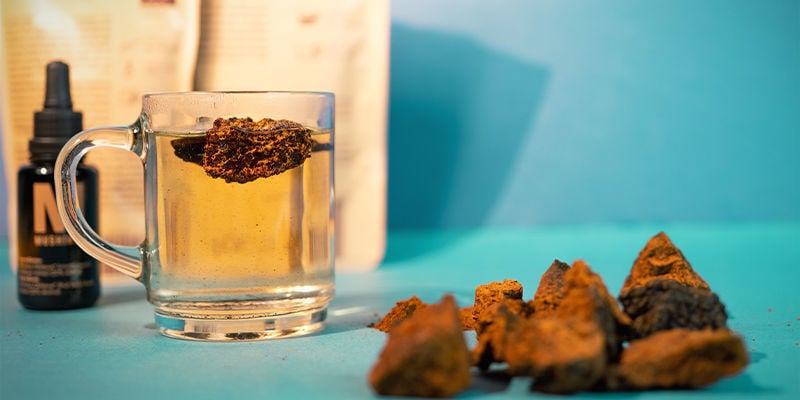
As we saw in this article, chaga has long been a part of folk practices across the Northern Hemisphere thanks to its potential health benefits. And while we still don’t know exactly how it delivers those benefits, or to what degree, the fact that chaga is deemed non-toxic and generally safe makes it a great supplement to try if you’re conscious about your health and general well-being.
-
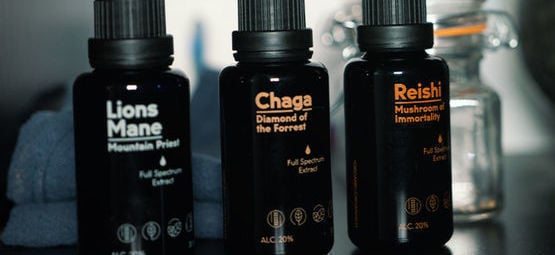 9 min
14 April 2022
Information About Mushroom Tinctures
Looking to discover the potential benefits that mushroom tinctures have to offer? Thinking of making a purchase, but a little unsure of where to start? You're certainly not alone; mushroom...
9 min
14 April 2022
Information About Mushroom Tinctures
Looking to discover the potential benefits that mushroom tinctures have to offer? Thinking of making a purchase, but a little unsure of where to start? You're certainly not alone; mushroom...
-
 2 min
4 January 2020
6 Exotic Herbs You’ve Never Heard Of (But Should Still Try)
Nature’s vast bounty of life forms provides a herb for every occasion. Are you looking add some spice to your sex life? Maybe you want to boost cognition before a bout of studying? Check out the...
2 min
4 January 2020
6 Exotic Herbs You’ve Never Heard Of (But Should Still Try)
Nature’s vast bounty of life forms provides a herb for every occasion. Are you looking add some spice to your sex life? Maybe you want to boost cognition before a bout of studying? Check out the...
-
 4 min
26 December 2018
Top 7 Nootropics To Boost Mental Performance
Nootropics are substances that enhance mental performance. Although the movie Limitless greatly increased interest in nootropics among the mainstream, the concept isn’t exactly new. From caffeine...
4 min
26 December 2018
Top 7 Nootropics To Boost Mental Performance
Nootropics are substances that enhance mental performance. Although the movie Limitless greatly increased interest in nootropics among the mainstream, the concept isn’t exactly new. From caffeine...













 United States
United States










